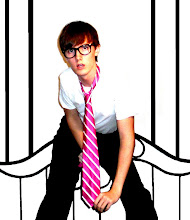The lucky seventh film to be featured on this here blog of mine is 2006's HARD CANDY directed by David Slade.
 This film is a modern cautionary tale as well as a film that makes one question their own moral standing. In a world where predators prey on young children through digital tallgrass of pixels and instant messages. The world defines themselves through usernames now, but what do we really know about anyone we chat with?
This film is a modern cautionary tale as well as a film that makes one question their own moral standing. In a world where predators prey on young children through digital tallgrass of pixels and instant messages. The world defines themselves through usernames now, but what do we really know about anyone we chat with? Jeff and Haley meet in person and he worships her in complete isolation. It's a spacious area, secluded, where he can avoid shame or scorn. It sets the tone for the rest of the film. They are alone to do what some may consider inappropriate. Already the little girl has the upper hand.
Jeff and Haley meet in person and he worships her in complete isolation. It's a spacious area, secluded, where he can avoid shame or scorn. It sets the tone for the rest of the film. They are alone to do what some may consider inappropriate. Already the little girl has the upper hand. He lets her into his secret world, his home. He doesn't let her into his heart or his head. This whole film is a battle for power or dominance. The color palette is a strong as the two distinct characters.
He lets her into his secret world, his home. He doesn't let her into his heart or his head. This whole film is a battle for power or dominance. The color palette is a strong as the two distinct characters. This shot seems to divide them. Haley is cold and calculated while Jeff's fury and emotions get the better of him. He betrays his secrets while she manipulates him at every turn. Ellen Page is wonderful as Haley. It's a performance that holds such strong conviction, but manages to sneak in a surprising amount of humor. She's clever and appears so vulnerable, but she sinks her fangs into whatever she pleases whenever it's convenient for her. Her mission is large and so is her drive.
This shot seems to divide them. Haley is cold and calculated while Jeff's fury and emotions get the better of him. He betrays his secrets while she manipulates him at every turn. Ellen Page is wonderful as Haley. It's a performance that holds such strong conviction, but manages to sneak in a surprising amount of humor. She's clever and appears so vulnerable, but she sinks her fangs into whatever she pleases whenever it's convenient for her. Her mission is large and so is her drive. Jeff's home is a beautiful one, but one that is a cemetery with unmarked graves. He took every one of the skeletons in his closet and hid them elsewhere. But not too far off because they are a part of him no matter how much he denies it.
Jeff's home is a beautiful one, but one that is a cemetery with unmarked graves. He took every one of the skeletons in his closet and hid them elsewhere. But not too far off because they are a part of him no matter how much he denies it. Patrick Wilson gives what I consider to be his best performance as Jeff. He gives Jeff a heart and creates an enormously sympathetic character out of what could have been an easily vilified pedophile. He brings emotions of serious depth as Haley attempts to dissect his life with her scalpel.
Patrick Wilson gives what I consider to be his best performance as Jeff. He gives Jeff a heart and creates an enormously sympathetic character out of what could have been an easily vilified pedophile. He brings emotions of serious depth as Haley attempts to dissect his life with her scalpel. Hard Candy is a clever film that's sharply written with plenty of wit and gorgeous cinematography as well as two stellar performances. It takes no prisoners and is sure to divide audiences wherever it is shown. I strongly recommend this film.
Hard Candy is a clever film that's sharply written with plenty of wit and gorgeous cinematography as well as two stellar performances. It takes no prisoners and is sure to divide audiences wherever it is shown. I strongly recommend this film.















































